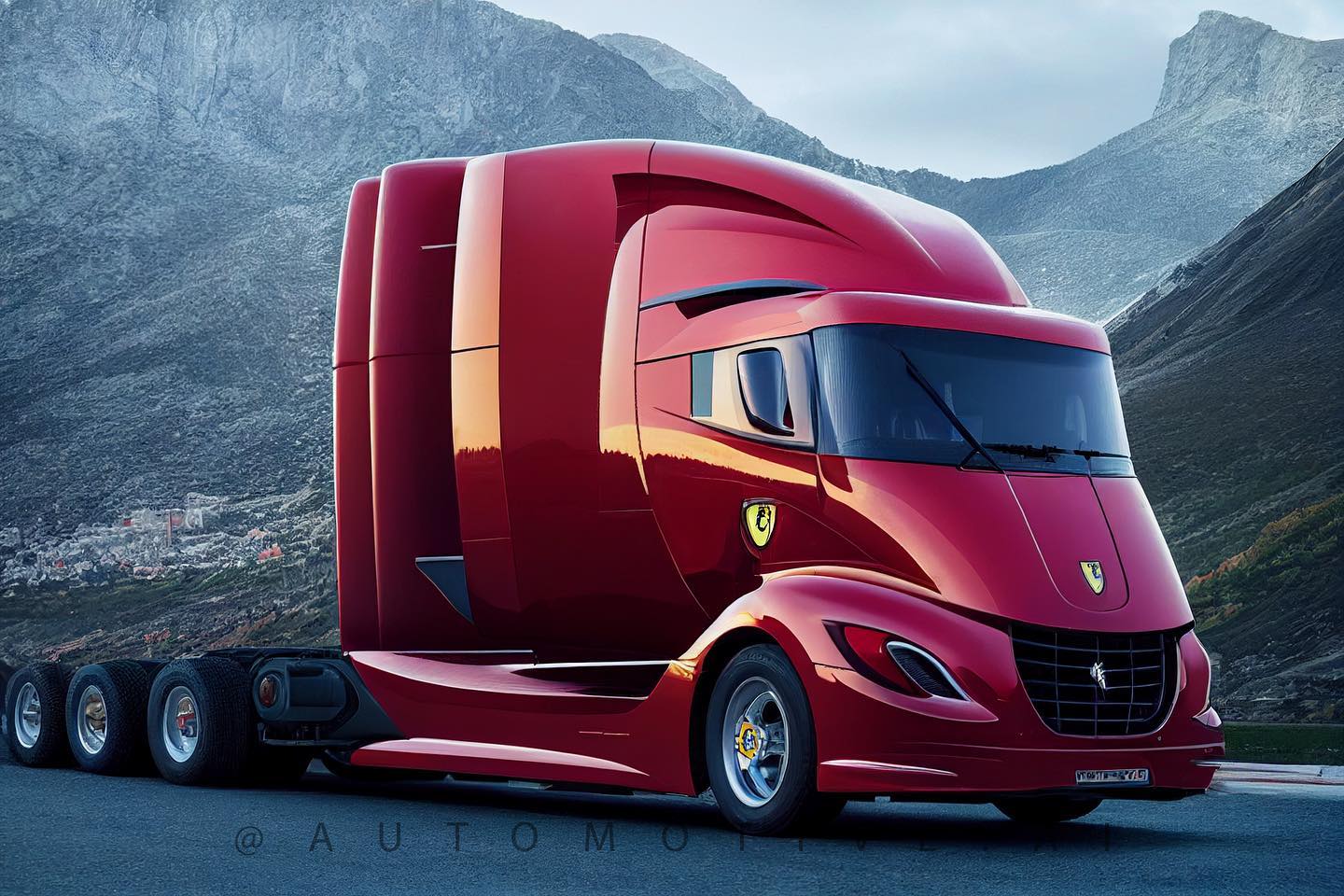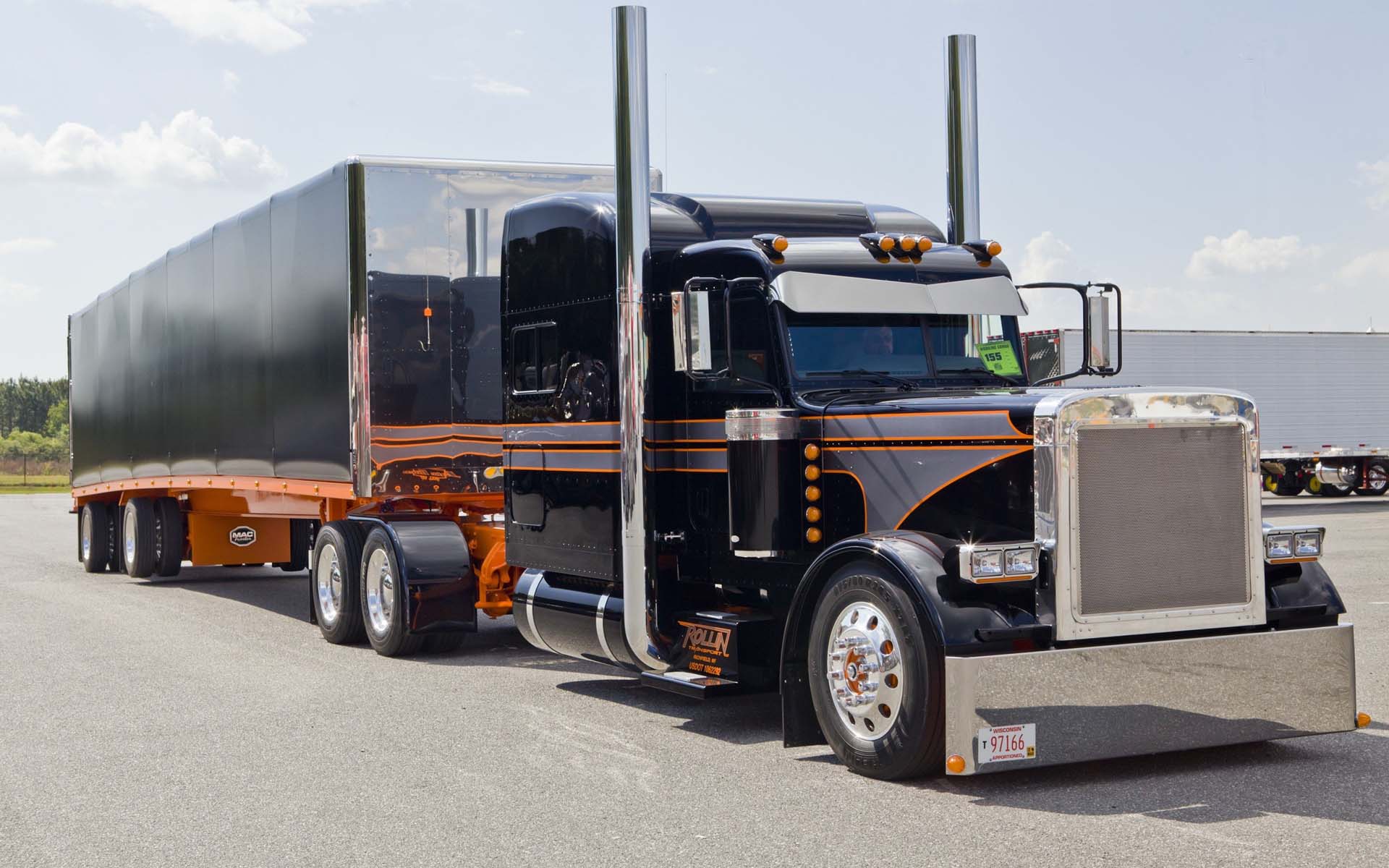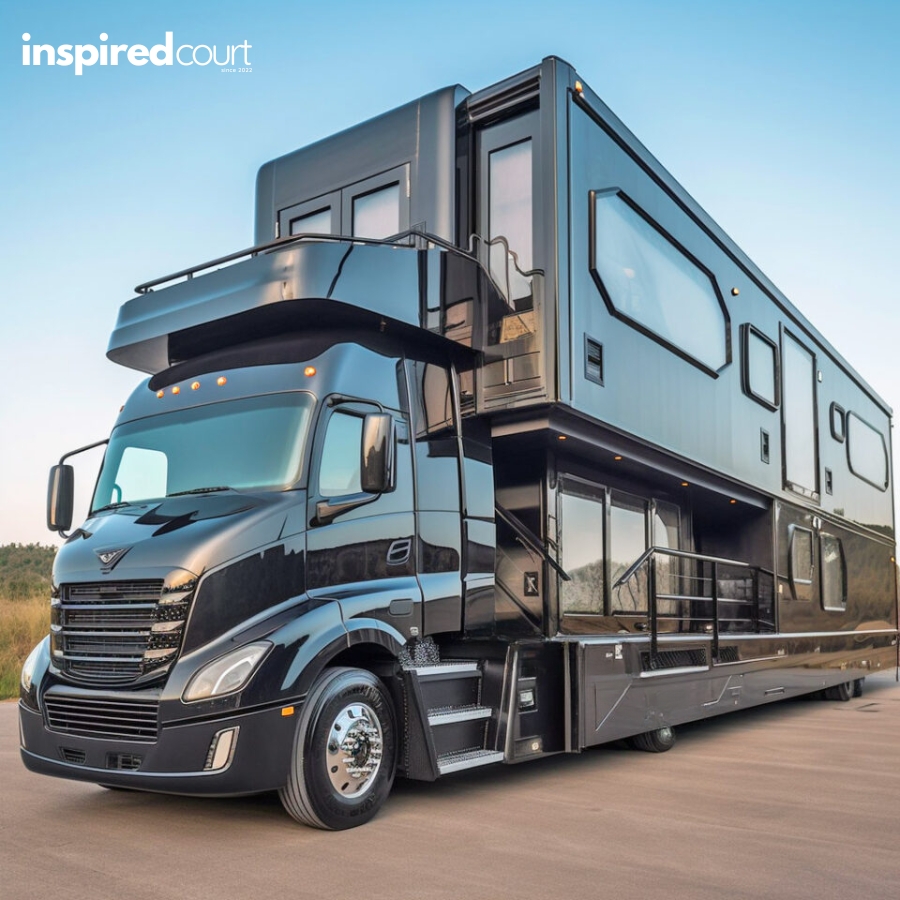Semi Truck Sleeper Cab Layout types.truckstrend.com
For the millions of long-haul truck drivers traversing the vast networks of highways, their semi-truck isn’t just a vehicle; it’s their mobile office, their dining room, and, most importantly, their home away from home. The Semi Truck Sleeper Cab Layout is the meticulously designed living space behind the driver’s seat, crafted to provide comfort, functionality, and a semblance of normalcy during weeks or even months on the road. Far more than just a bunk, modern sleeper cabs are sophisticated environments engineered to optimize driver rest, productivity, and overall well-being, directly impacting safety and efficiency in the demanding world of commercial trucking. Understanding its various components and configurations is key to appreciating the ingenuity and necessity behind these vital spaces.
I. The Evolution and Purpose of the Sleeper Cab
Semi Truck Sleeper Cab Layout
The concept of a sleeper cab has evolved dramatically from its rudimentary beginnings. Early iterations were often little more than a cramped space with a rudimentary cot, offering minimal comfort. However, as the trucking industry grew and regulations like those from the Department of Transportation (DOT) mandated sufficient rest periods, the design and importance of the sleeper cab escalated.
Today, the primary purpose of a sleeper cab is to provide a compliant, comfortable, and functional living environment that allows drivers to rest, eat, and manage personal needs without leaving their vehicle. This "home on wheels" is crucial for driver retention, morale, and adherence to Hours of Service (HOS) regulations, which dictate maximum driving times and mandatory rest breaks. A well-designed sleeper cab directly contributes to reducing driver fatigue, enhancing safety, and improving the quality of life for those who spend the majority of their time on the road.
II. Key Components of a Modern Sleeper Cab Layout
Modern sleeper cabs are marvels of compact engineering, integrating numerous amenities into a relatively small footprint. The layout typically prioritizes space efficiency and multi-functionality.
A. The Sleeping Area
Undoubtedly the most critical component, the sleeping area is designed for restorative rest.
- Mattress Types: Standard options include innerspring, but many drivers upgrade to memory foam or gel-infused mattresses for superior comfort and support, often mirroring residential bed quality.
- Bunk Sizes: Ranging from single bunks (often 36-42 inches wide) to double bunks (allowing for a second sleeping space, sometimes a fold-down upper bunk or a convertible dinette), and even pull-out sofa beds in larger models.
- Privacy Curtains: Essential for blocking light and creating a private sleeping environment, separating the bunk from the cab’s front section.

B. Storage Solutions
Maximizing storage is paramount in a confined space.

- Overhead Cabinets: Running along the top walls, ideal for clothes, personal items, and dry food.
- Under-Bunk Storage: Often accessible via lift-up mattress platforms, perfect for larger items, tools, or luggage.
- Wardrobe Lockers: Narrow, tall cabinets with hanging space for clothes, preventing wrinkles.
- Drawer Systems: Integrated into various sections for smaller items, utensils, or documents.
- Importance of Organization: Well-designed storage reduces clutter, improves accessibility, and creates a more pleasant living space.

C. Living/Work Space
Many sleeper cabs incorporate areas for eating, working, and relaxing.
- Dinette Tables: Often convertible, serving as a dining area, a workspace, or even converting into an additional sleeping bunk.
- Swivel Seats: The driver and passenger seats often swivel to face the rear, expanding the living area and creating a conversational space.
- Desk Areas: Smaller pull-out or fold-down desks for paperwork, laptop use, or meal preparation.
D. Kitchenette/Galley
Enabling drivers to prepare their own meals significantly improves health and reduces expenses.
- Mini-Fridge: Essential for perishable foods and drinks.
- Microwave Oven: A staple for heating prepared meals.
- Sink: Compact sinks with small water tanks are found in more advanced models, primarily for handwashing or quick rinses.
- Counter Space: Limited but crucial for food prep.
- Power Outlets: Numerous 12V and 120V outlets are distributed throughout for appliances and charging electronics.
E. Climate Control & Ventilation
Maintaining a comfortable temperature is vital for rest and well-being.
- HVAC Systems: Integrated heating and air conditioning, often with auxiliary power units (APUs) that run independently of the main engine to save fuel and reduce idle time.
- Ventilation Fans: Roof-mounted fans for air circulation and cooling when AC isn’t needed.
- Window Options: Sliding or pop-out windows with screens for natural ventilation.
F. Entertainment & Connectivity
Keeping drivers connected and entertained is increasingly important.
- TV Mounts: Often pre-wired for flat-screen TVs.
- Sound Systems: Enhanced audio systems for radio, music, or movies.
- USB Charging Ports: Abundant ports for phones, tablets, and other devices.
- Wi-Fi Considerations: Space and power for mobile hotspots or integrated Wi-Fi solutions.
G. Restroom Facilities (Optional/Advanced)
In the largest, most luxurious sleeper cabs, basic restroom facilities can be found.
- Portable Toilets: Dedicated spaces for chemical or cassette toilets.
- Compact Showers: Extremely rare but available in highly customized or "condo" style sleepers, often wet baths that combine the shower and toilet area.
III. Types of Sleeper Cab Layouts
Sleeper cab layouts are primarily categorized by their size and roof height, which dictate the available interior space and amenities.
A. Flat-Top Sleepers
- Size: Typically 36 to 48 inches deep.
- Characteristics: These have a low roofline, flush with the top of the truck’s main cab. They offer the least amount of interior head height and overall space.
- Use Case: Often preferred for specialized hauling (e.g., car carriers) where overall vehicle height is a concern, or by drivers who primarily use their truck for shorter hauls and only occasionally need to sleep in it. Amenities are minimal.
B. Mid-Roof Sleepers
- Size: Common sizes range from 48 to 60 inches deep.
- Characteristics: The most common type, offering a good balance between interior space and aerodynamic efficiency. The roof is slightly raised above the main cab, providing more headroom.
- Use Case: Suitable for most long-haul drivers, providing adequate space for a comfortable bunk, basic storage, and sometimes a small dinette or microwave.
C. Raised Roof/High-Roof Sleepers (Condo Sleepers)
- Size: The largest, typically 72 to 80+ inches deep.
- Characteristics: These feature a significantly raised roof, often allowing a driver to stand upright throughout most of the sleeper. They offer the most expansive interior space, often resembling a small apartment.
- Use Case: Ideal for team drivers who need two bunks, or solo drivers who spend extended periods on the road and desire maximum comfort and amenities, including larger kitchenettes, more extensive storage, and sometimes even a small dedicated workstation or basic restroom facilities.
D. Custom/Aftermarket Sleepers
- Characteristics: These are specialized, often highly luxurious sleeper units built by third-party manufacturers, tailored to specific driver needs or preferences. They can be incredibly spacious and feature high-end residential amenities.
- Use Case: For owner-operators seeking unparalleled comfort and customization, often at a significant premium.
IV. Optimizing Your Sleeper Cab Layout: Practical Advice
Making the most of your sleeper cab space is crucial for comfort and efficiency.
- Personalization: Decorate with personal items, photos, or small comforts to make the space feel like home and combat loneliness.
- Smart Organization: Utilize storage bins, drawer dividers, and vertical space. Roll clothes instead of folding. Invest in multi-functional furniture like an ottoman with storage.
- Power Management: Understand your truck’s electrical system. Invest in a good quality power inverter (pure sine wave recommended) for sensitive electronics. Consider an Auxiliary Power Unit (APU) for climate control without idling the main engine.
- Maintenance & Cleanliness: Regular cleaning is vital. Keep cleaning supplies on hand. Address spills immediately. Consider air purifiers or dehumidifiers to maintain air quality. Pest control is also a consideration.
- Safety & Security: Ensure all doors and windows are securely locked when parked. Consider a personal alarm or a small fire extinguisher.
- Ergonomics: Arrange your living/work area to be comfortable and prevent strain. Good lighting is essential for reading or paperwork.
V. Challenges and Solutions in Sleeper Cab Living
Life on the road presents unique challenges that a well-designed sleeper cab helps mitigate.
- Limited Space:
- Solution: Embrace minimalism, multi-functional items, and creative storage hacks. Regular decluttering.
- Noise & Vibrations:
- Solution: Quality insulation, heavy curtains, earplugs, and noise-canceling headphones can help. Choose quieter parking spots when possible.
- Temperature Extremes:
- Solution: Rely on robust HVAC systems, APUs, and good insulation. Consider portable fans or small heaters for supplemental comfort. Window coverings help regulate temperature.
- Loneliness/Isolation:
- Solution: A comfortable, personalized space can alleviate some of this. Stay connected with family/friends via calls, video chats, and social media.
- Maintaining Health & Hygiene:
- Solution: Utilize the kitchenette for healthy meal prep. Carry basic hygiene supplies. Consider a gym membership for access to showers and exercise facilities at truck stops.
Concluding Summary
The semi-truck sleeper cab layout is far more than an afterthought; it is a critical component of the modern trucking industry, directly impacting driver welfare, regulatory compliance, and operational efficiency. From basic flat-top models to luxurious raised-roof "condos," each layout is designed to maximize comfort and utility within the confines of a truck. As the backbone of our economy, professional truck drivers deserve a functional and comfortable space to rest and rejuvenate. The continuous innovation in sleeper cab design reflects an ongoing commitment to supporting these essential workers, ensuring they remain safe, productive, and comfortable on their tireless journeys across the nation.
Cost Considerations for Sleeper Cab Features and Sizes
It’s important to note that the "price" of a sleeper cab layout isn’t a standalone figure but rather reflects the additional cost or premium associated with the truck’s overall purchase price based on the size and features chosen. These figures are estimates and can vary widely based on truck manufacturer, model year, specific options, and market conditions.
| Sleeper Type/Feature | Typical Size/Description | Estimated Cost Impact (Premium over Base Day Cab) | Key Benefits/Notes |
|---|---|---|---|
| Flat-Top Sleeper | 36-48 inches deep, low roofline | $5,000 – $15,000 | Most economical, lighter weight, good for height-restricted routes. Minimal amenities. |
| Mid-Roof Sleeper | 48-60 inches deep, moderate roof height | $15,000 – $30,000 | Common choice, good balance of space and aerodynamics. Basic living amenities. |
| Raised Roof/High-Roof | 72-80+ inches deep, significant interior height | $30,000 – $60,000+ | Maximum space, stand-up room, ideal for team drivers or extended living. Full amenities. |
| Auxiliary Power Unit (APU) | Independent engine for climate control & power | $10,000 – $15,000 | Reduces engine idling, saves fuel, prolongs engine life, provides consistent power. |
| Premium Mattress Upgrade | Memory foam, gel, or custom innerspring | $500 – $2,000 | Significantly improves sleep quality and driver comfort. |
| Integrated Refrigerator | Mini-fridge, sometimes with freezer compartment | $500 – $1,500 | Essential for food storage, reduces meal costs. |
| Microwave Oven (Built-in) | Compact unit for heating meals | $200 – $800 | Convenience for meal preparation. |
| Swivel Seats (Driver/Passenger) | Allows front seats to rotate into living area | $300 – $1,000 | Expands living space, creates conversational area. |
| Dinette Table (Convertible) | Table that converts to a bed or workspace | $500 – $1,500 | Multi-functional, saves space. |
| Shower/Toilet Combo (Rare) | Wet bath in highly customized, large sleepers | $5,000 – $15,000+ | Ultimate convenience, but adds significant weight, complexity, and cost. |
| Enhanced Insulation/Soundproofing | Additional materials to reduce noise and regulate temp | $1,000 – $3,000 | Improves comfort, especially in noisy environments or extreme climates. |
Frequently Asked Questions (FAQ) about Semi Truck Sleeper Cab Layout
1. What is the average size of a semi-truck sleeper cab?
Sleeper cabs vary widely, but common sizes range from 36 inches deep (flat-top) to 80+ inches deep (raised roof/condo sleepers). The most common mid-roof sleepers are typically 48 to 60 inches deep.
2. Can I customize my semi-truck sleeper cab?
Yes, customization is very common. Drivers often personalize their sleeper cabs with upgraded mattresses, custom storage solutions, personal decor, and aftermarket electronics. Some companies even specialize in highly customized, luxurious sleeper conversions.
3. What are essential items for a sleeper cab?
Essential items include bedding, cooking essentials (mini-fridge, microwave, non-perishable food), cleaning supplies, personal hygiene products, a power inverter for electronics, and entertainment options. Many drivers also carry a small first-aid kit and basic tools.
4. Do all semi-trucks have sleeper cabs?
No. Trucks used for local deliveries or day runs, known as "day cabs," do not have sleeper compartments. Only long-haul trucks designed for overnight or multi-day trips are equipped with sleeper cabs.
5. How do truckers manage power in their sleeper cabs when the engine is off?
Truckers primarily use Auxiliary Power Units (APUs), which are small, independent engines that power the HVAC system and electronics without idling the main truck engine. Alternatively, some use large battery banks with power inverters, or shore power connections at truck stops that offer them.
6. Are there sleeper cabs with showers and toilets?
While rare, the largest and most luxurious "condo" or custom-built sleeper cabs can include compact wet-bath facilities with a small shower and a portable or marine-style toilet. These are high-end options and not common in standard production models.
